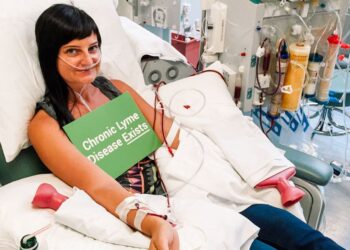In young children, the long-term effects of SARS-CoV-2 infection may differ significantly from those in older children or adults.
A recent study in JAMA Pediatrics systematically investigated the symptoms experienced by children under the age of 5 years and the frequency of long COVID in this age group.
The analysis revealed that 14% of infants and toddlers and 15% of preschoolers in the cohort showed symptoms consistent with long COVID.
Roland Elling, MD, is the head of Pediatric Infectious Disease Research at University Medical Center Freiburg, Freiburg, Germany. He also serves as the principal investigator of the MOVE-COVID-BW project, a multicenter initiative in Baden-Württemberg, Germany, focused on long COVID in children and adolescents. Speaking to Medscape Medical News, Elling expressed surprise at the reported rates.
Symptom Discrepancy
“This would mean that 1 in 6 children in these age groups develop long-term COVID after a SARS-CoV-2 infection. This does not correspond to the clinical reality we experience in our specialized outpatient clinics,” said Elling.
“In our view, long COVID is primarily a condition of the second decade of life, not the first 10 years. We see almost no cases in toddlers — and that holds true at all university clinics in Baden-Württemberg, not just Freiburg,” he added.
In contrast, findings from a multicenter cohort study suggested a different age pattern. Rachel S. Gross, MD, professor at NYU Grossman School of Medicine in New York City, and co-principal investigator of the NIH RECOVER Pediatric Observational Cohort Study, led the study from 2022 to 2024. The results identified persistent post-COVID symptoms, even among children under the age of 5 years.
The study combined retrospective and prospective data to identify symptoms that are more common in children with prior SARS‑CoV‑2 infection and to develop an age-specific long COVID index. The researchers enrolled 472 children aged 0-2 years and 539 children aged 3-5 years. Among them, 59% (278 of 472) of the younger group and 74% (399 of 539) of the older group had documented prior infections. These findings produced distinct symptom indices for each age group.
Elling noted a key limitation: “Seroprevalence studies showed that by 2023, over 90% of children had been infected with SARS-CoV-2. As younger children often have asymptomatic infections, many cases may have been missed. No serologic testing was performed; all data relied on parental information.”
On average, parents of younger children were surveyed 10 months after infection, and parents of preschoolers were surveyed 17 months after infection.
Although this helps separate long COVID from short-term symptoms, Elling stated that the long delay makes the data unreliable. “I cannot reliably ask parents if their child had symptoms lasting 4 weeks over a year ago,” he said.
The questionnaires assessed 41 symptoms in children aged 0-2 years and 75 symptoms in preschoolers aged 3-5 years. These symptoms were grouped into eight clinical areas: general health, ENT, heart and lungs, digestion, skin, muscles and joints, nervous system, and mental health.
According to the Long COVID Symptom Index developed in the RECOVER project, 14% of children aged 0-2 years and 15% of those aged 3-5 years were identified as likely to have long COVID.
Age-Specific Symptom
The most common symptoms in infants and toddlers were sleep disturbances, irritability, loss of appetite, nasal congestion, and a productive cough. According to parents, preschoolers more often experience dry cough, daytime fatigue, and low energy levels. Parents also reported that children with more severe symptoms had a poorer quality of life, reduced overall well-being, and sometimes developmental delays.
“In older children and adolescents, it is neurocognitive symptoms such as postexertional malaise or brain fog that significantly impact daily life — not cough or other respiratory issues,” said Elling.
He noted that these complex symptoms are difficult to detect in young children.
Conclusion
Studies have shown that less than 1% of adolescents develop long COVID, with the risk likely to be even lower in younger children. Elling said, “Young children cope better with COVID-19 than adolescents and adults.”
Elling agreed with the authors that long COVID presents differently in very young children than in older children and should be defined and studied by age. “I would go even further,” he said. “To truly understand the disease, we need to move away from the broad term ‘long COVID,’” he said.
Elling emphasized that long COVID should be classified not only by age but also by the organ systems affected. “It is medically inaccurate to group all symptoms lasting more than 12 weeks — such as headache, anosmia, or dyspnea — under one broad diagnosis. We don’t do this for any other disease,” he said.
These symptoms are likely to have different underlying mechanisms; for example, loss of smell after COVID-19 is not the same as chronic headaches or breathing issues.
Despite some methodological limitations, Elling supported the study’s approach. “Systematic assessment of long COVID in early childhood is important. However, we must remain realistic. If the data suggest that four children in every class develop long COVID after a SARS-CoV-2 infection, it would be a serious concern. But I don’t think that’s actually the case,” he said.
This story was translated from Medscape’s German edition.
Source link : https://www.medscape.com/viewarticle/why-long-covid-may-hit-toddlers-harder-than-thought-2025a1000i0d?src=rss
Author :
Publish date : 2025-07-08 05:12:00
Copyright for syndicated content belongs to the linked Source.









